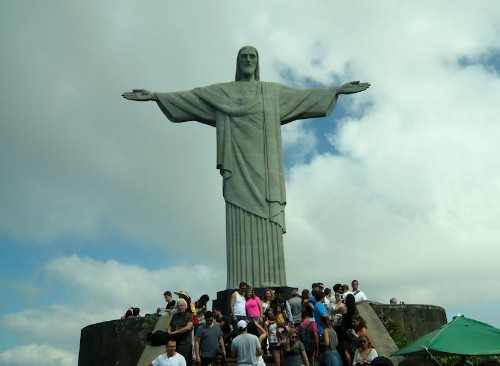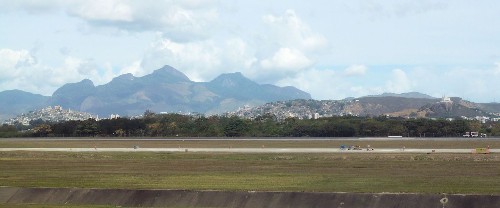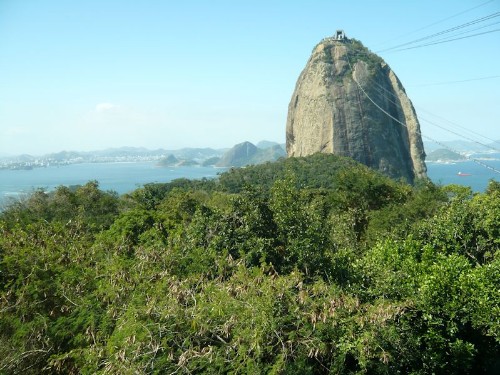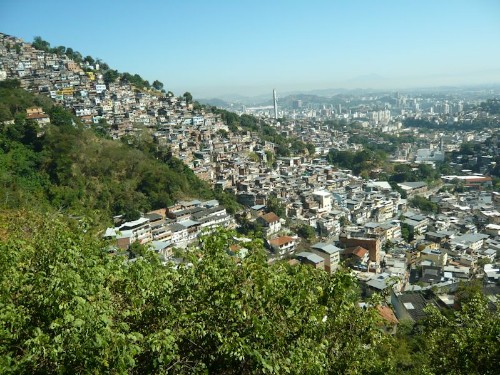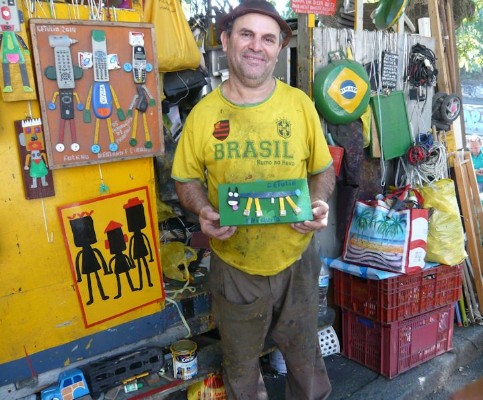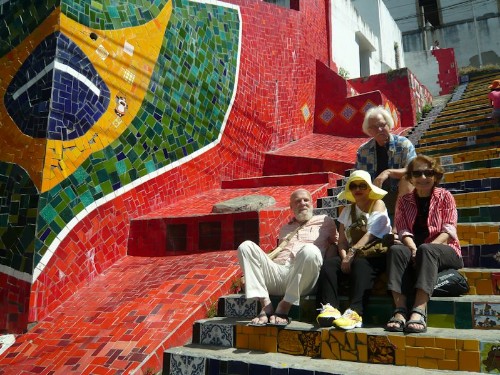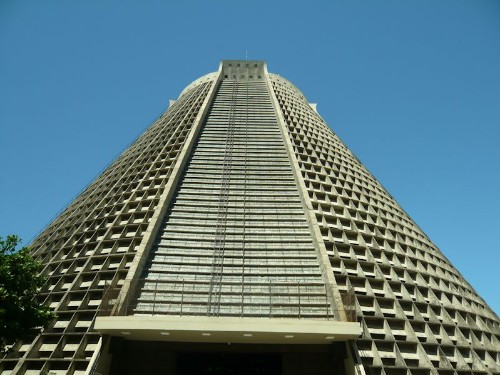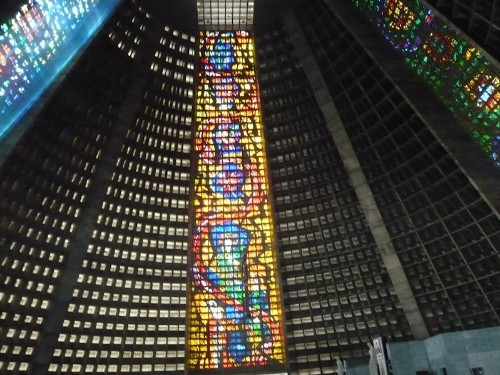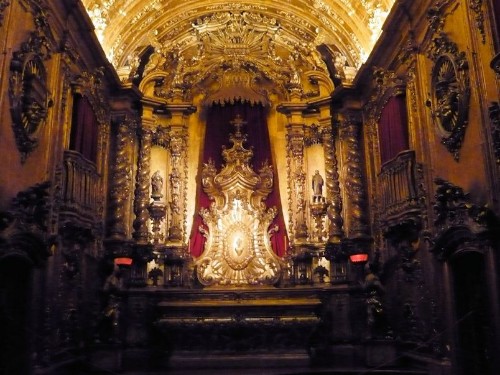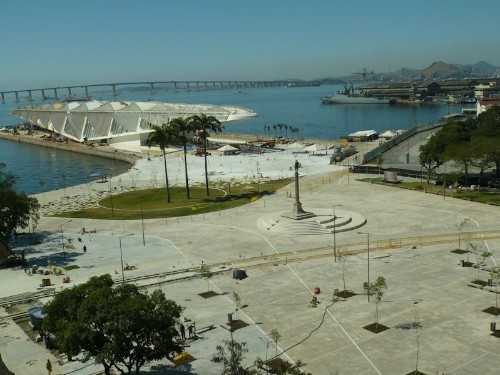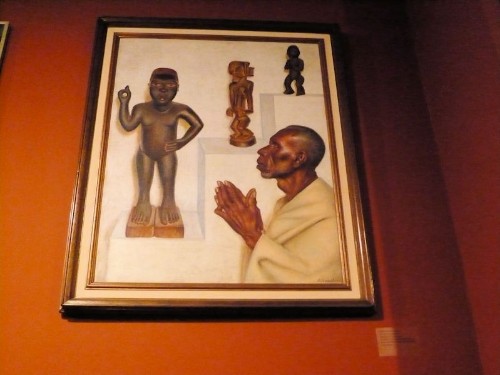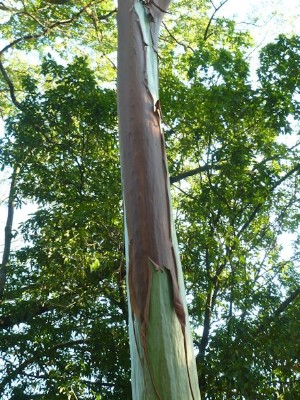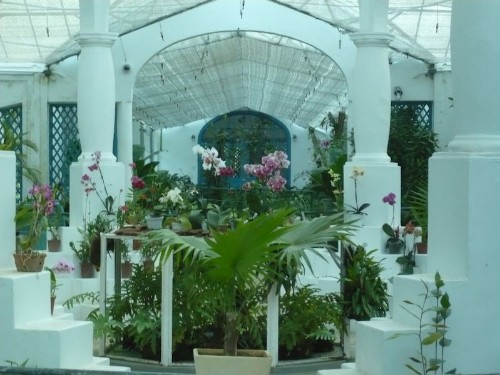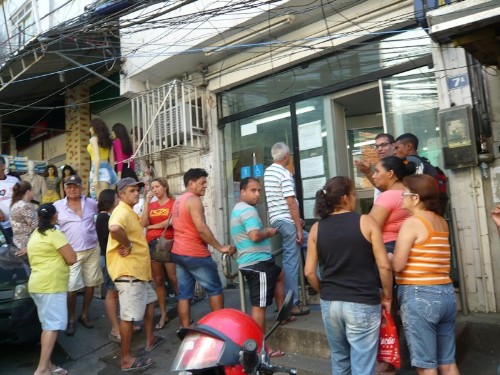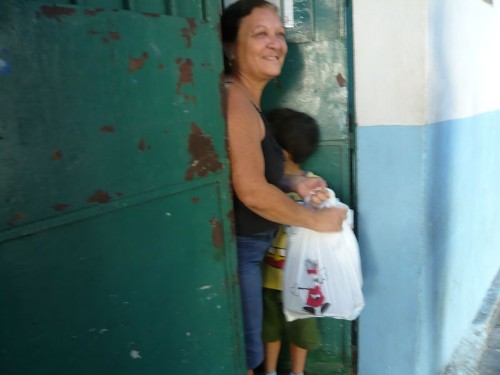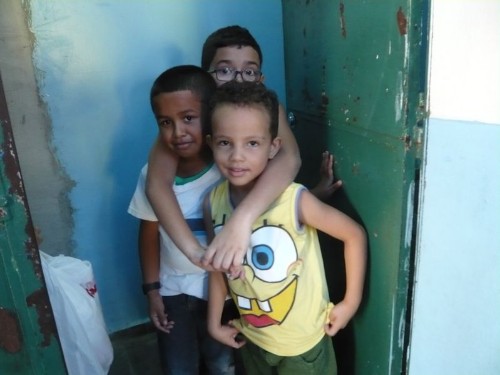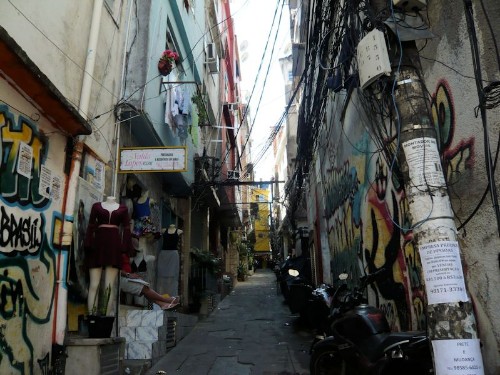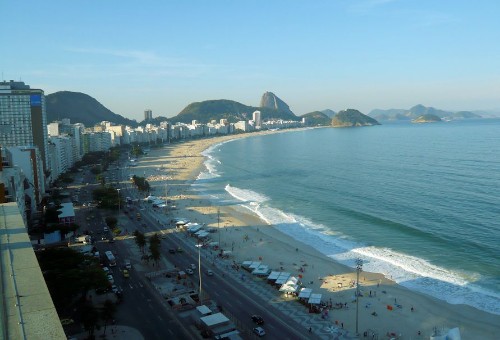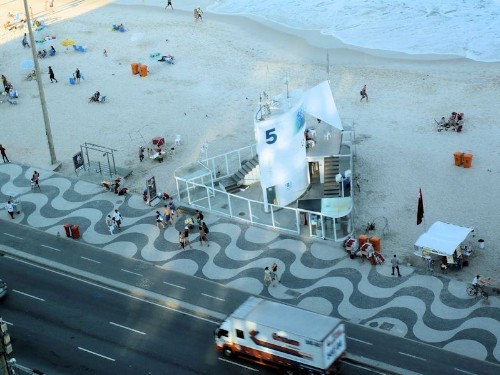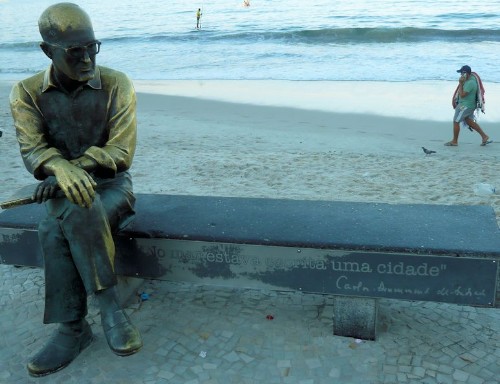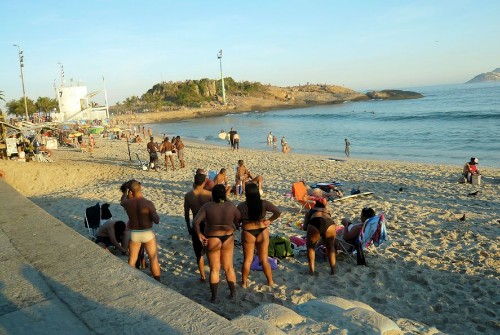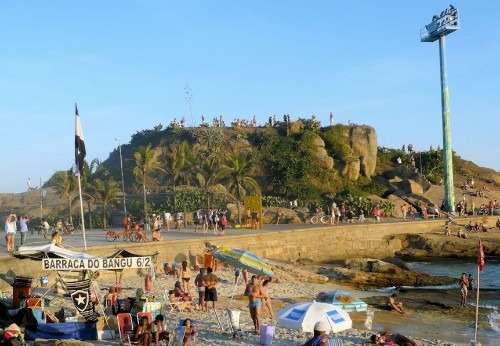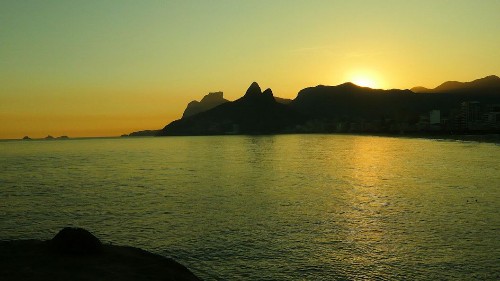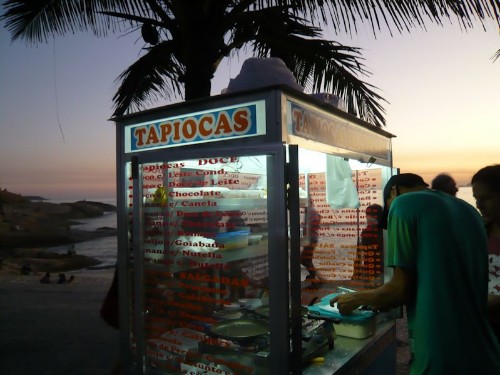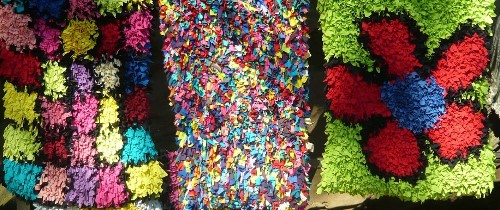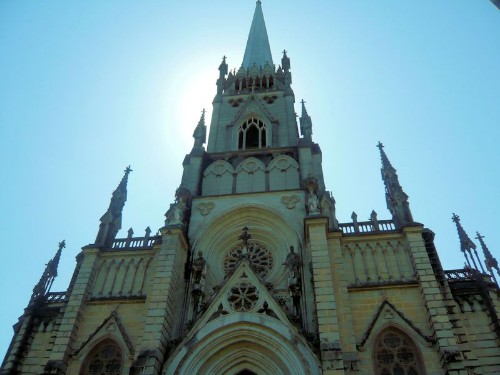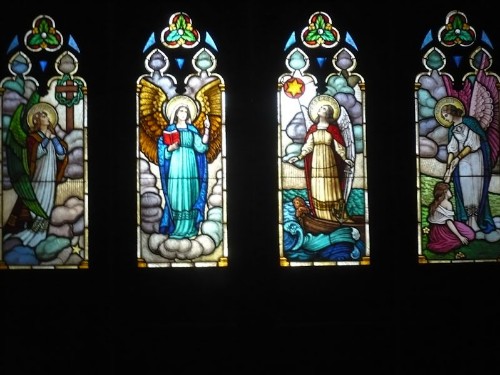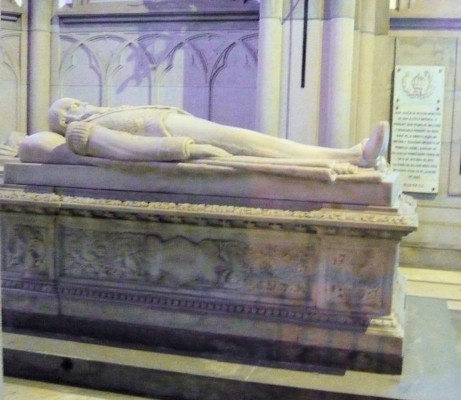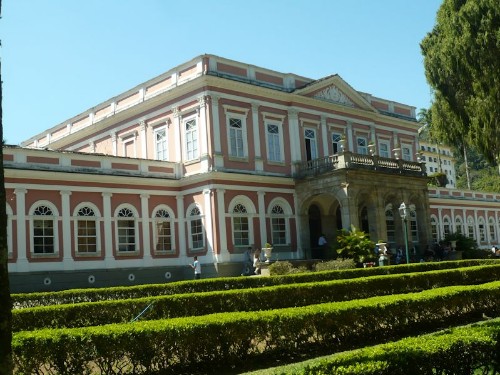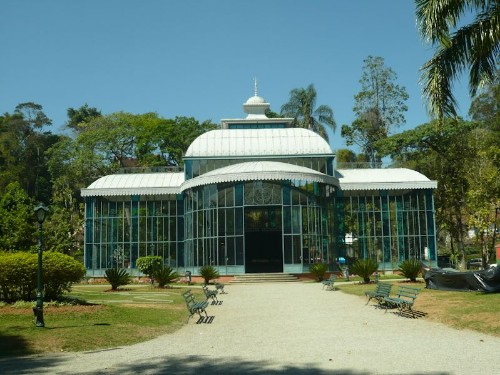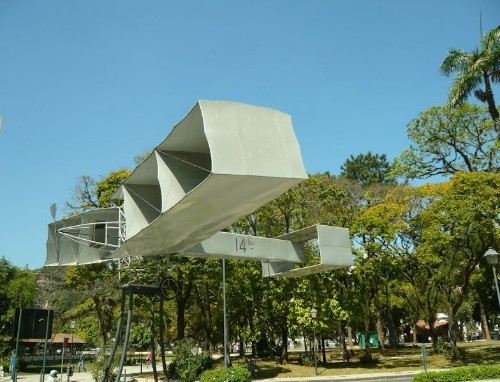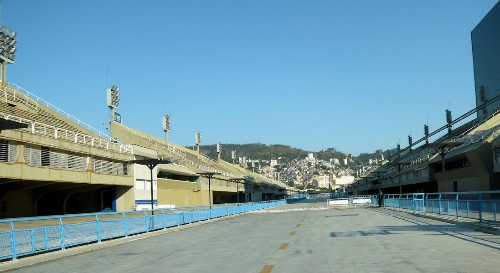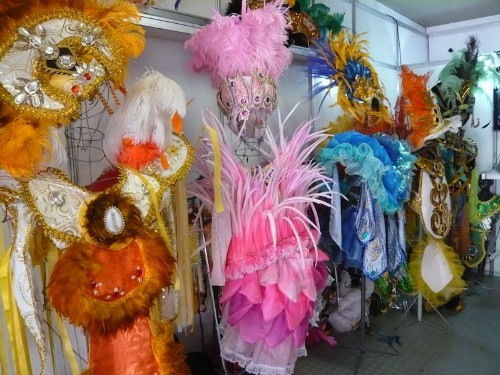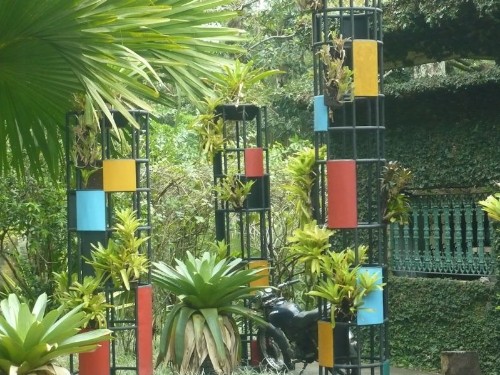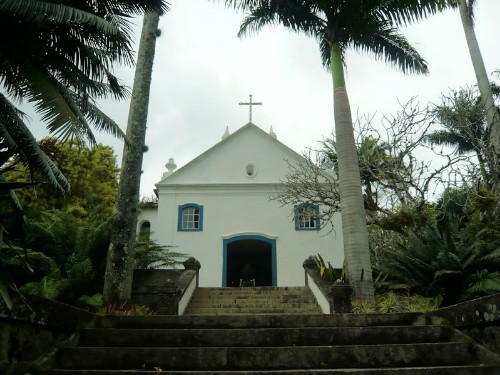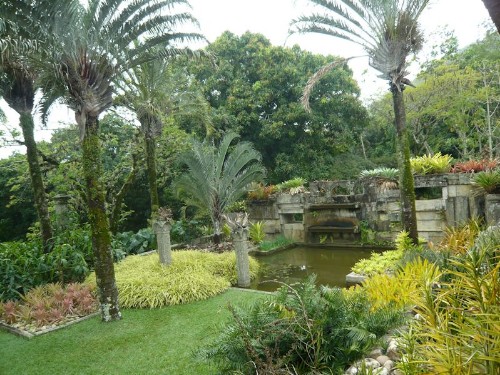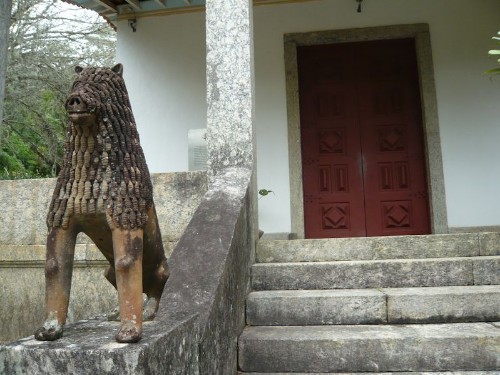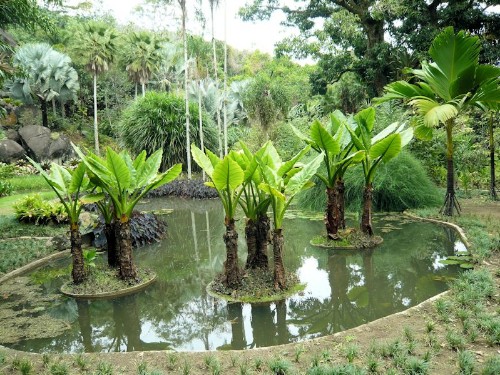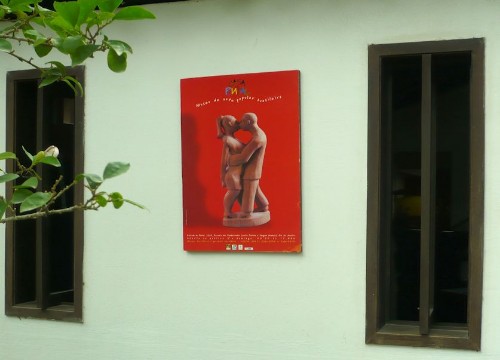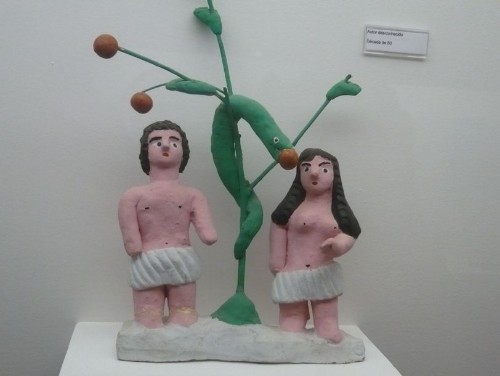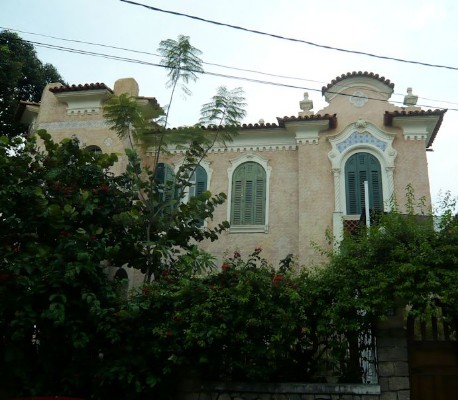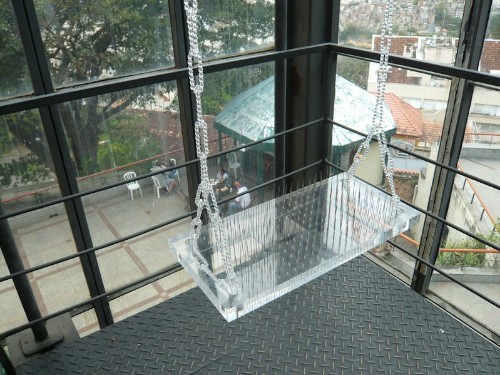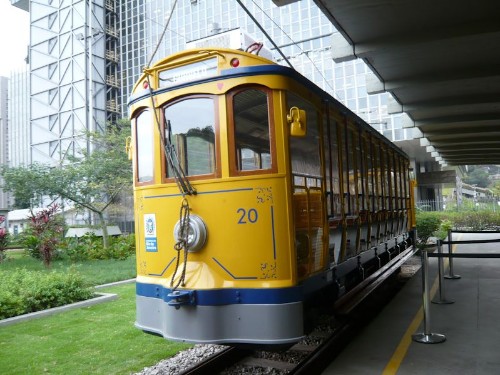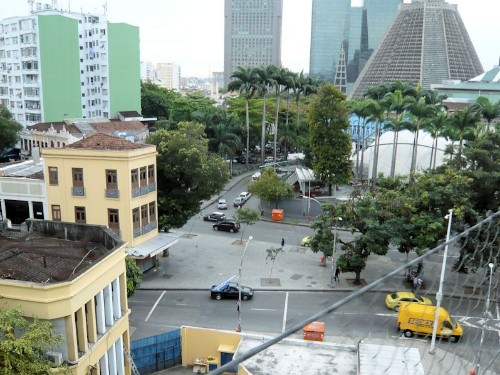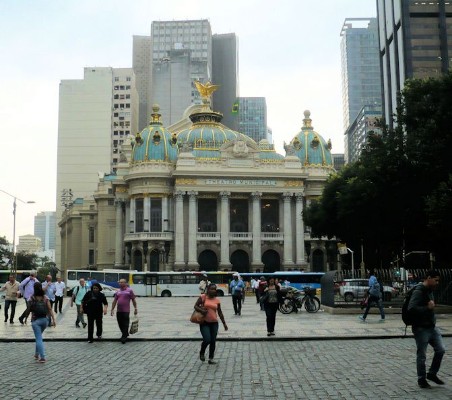Rio de Janeiro
The incomparable 24-hour city
By: Zeren Earls - Dec 02, 2015
Flying south a thousand miles from Salvador to Rio de Janeiro (“January River"), we found cooler weather farther away from the equator. We landed within eyesight of coastal mountains of granite and the South Atlantic Ocean, between which Rio occupies a narrow strip with little room to grow on either side. The Port Zone is where the city started in 1565; now half of Rio’s population of 13 million lives in the city proper, with the remaining half in the outskirts. 2015 marks the 450th year of the city’s founding; Rio was the capital of Brazil from 1763 until 1960.
The Windsor Martinique Hotel in Copacabana on Rio’s famed Atlantic beach coastline was our home for seven nights. Shortly after we dropped off our bags, we went for an orientation walk in the area around the hotel with our guide, Celine. Cariocas — as Rio’s residents call themselves — were out and about, displaying their characteristic joie de vivre. We were able to observe the locals’ joyous lifestyle while we had dinner at a restaurant on Ocean Boulevard.
On a private escorted tour the next morning, we traveled to Corcovado (“Hunchback") Mountain in Tijuca National Park, to see Brazil’s famous landmark monument — the statue of Christ the Redeemer on its 2,330-foot-high summit. A cog-wheel train ride, starting at the station in the Cosme Velho neighborhood, provided scenic views of the mountain and the city below as it climbed through the park’s tropical foliage. From the upper station we opted to walk the short distance to the top, rather than taking the escalator.
At the summit, a constant flow of people jostled for a spot to be photographed under the outstretched arms of Christ the Redeemer. Erected in 1931, the statue is 124 feet high and weighs 1145 tons. Known as one of the seven wonders of the modern world, it welcomes all visitors and can be seen day and night from many vistas throughout the city. The spot also offers a panoramic view of the city, including the 78,000-capacity Maracana stadium, where the opening and closing ceremonies of the 2016 Rio Olympics are to take place.
Located close to the train station in Cosme Velho is the Museu Internacional de Arte Naif do Brasil. The museum holds a French jeweler’s private collection of naïve art with over 5000 pieces. The first floor of the museum is dedicated to Brazilian folk art, which features many paintings of Rio, including a very large canvas of Christ the Redeemer and the surrounding city by Lia Mitrakis. The second floor displays works from many parts of the world.
Sugarloaf Mountain (Pão de Açúcar) is a famous natural icon located at the entrance to Guanabara Bay. We went up the 1300-foot granite monolith in a cable car, which holds up to 65 passengers and offers 360-degree views of Rio’s beaches, mountains, and favelas set against the city’s steep hills.
Following our descent from Sugarloaf Mountain, we visited the neighborhood of Morro dos Prazeres. As we walked uphill, a youth project consisting of painted bricks stacked like houses against a wall welcomed us to the favela. Such creative projects are designed to keep young people off the streets and out of trouble. Across the street from the colorful wall, an artist sold works he had created out of recycled materials, including cell phones. He had several stalls stacked with his art — toy trucks, planes, dolls, portraits, and the like. I bought a portrait of his own family, depicting a white couple with an adopted black son, as I wanted to support the creative energy that pours out of the favelas.
Afterwards we descended to the town center and walked through the neighborhood of Santa Teresa. “Selarón Stairs", a colorful mosaic work on steep stairs connecting two streets, adds a bohemian atmosphere to the neighborhood. Created by artist Jorge Selarón, the stairs, along with their side walls, are covered with mosaics collected from all over the world. In addition to using the stairs for passage, people also use them as a place to mingle.
The city center, Largo da Carioca, is undergoing renovation after years of neglect. In addition to restored historic buildings, the skyline boasts a new modern area dominated by the Roman Catholic Catedral Metropolitana. The huge cone-shaped structure seats 3000 people and can accommodate up to 20,000. Four 147-foot-high stained glass windows shimmer like jewels in the interior. On the outside the contemporary cathedral reflects on the mirrored facades of surrounding high-rise buildings.
Also in the town center, up a hill, is the Benedictine monastery of São Bento, parts of which date from 1633. Overlooking the bay, the Baroque building’s interior is rich in gold leaf and woodcarvings. Around the corner from the monastery is the start of the port area, which is being redeveloped in time for the 2016 Olympic Games. The new Museu de Arte do Rio (MAR) is part of this development, linking the roofs of two historic buildings. Dedicated to the history of Rio, the museum shows how the city has developed over the decades through the eyes of its artists, depicting religious images that arrived with the Portuguese, the crucial role of the slaves, and women. Museum programs also encourage participation by surrounding communities. The topfloor terrace overlooks the port, where the Museum of the Future is under construction.
Our next excursion was to the Botanical Garden, an ecological sanctuary containing 235,000 plants and trees representing nearly 8000 species. It was created in 1808 by Portuguese prince regent Dom João VI to introduce plants from other countries, such as tea, cloves, cinnamon, and pineapples, in addition to housing rare Brazilian species. At the entrance is a majestic avenue lined with a double row of 134 royal palms. Other paths go past a large pond with water lilies, an orchid pavilion, and Brazil’s national tree — the pau-brasil — with its reddish wood, which is used in coloring paint. Immersed in nature’s exuberance, we strolled past cocoa plants, jack fruit, and cashew trees to the sounds of native birds. We also enjoyed lunch in the garden café.
Our day ended at the Ipanema Hippie Fair, an outdoor market where vendors set up stalls. On sale is a wide variety of woodcarvings, paintings, hand-tooled leather goods, and other handmade items. I purchased a necklace made of processed fibers and seeds.
The following morning an optional tour took us to Rocinha (“Little Farm"), Rio’s largest favela, where up to 250,000 people live. We traveled uphill by jeep to an area where people used to grow produce in small gardens, but which now is overbuilt by houses stacked atop each other and set right into the granite. We walked up narrow streets to a promontory with a 360-degree view of the surrounding high-rises, divided from the favela by a pedestrian arch. The descent on narrow alleys with uneven steps gave us an intimate view of houses and shops, providing a glimpse into people’s daily lives — selling empanadas or candy out of tiny windows and repairing bikes on sidewalks. This was a thriving community of low-income people, who seemed to live happily and paid taxes to the municipality to receive services, such as a sports arena with a swimming pool.
On the way back to Copacabana, we drove along the beaches, which provide an escape for the urban masses, squeezed close together into high-rises between the mountains and the Atlantic. We stopped for coconut water at a beach stand, watched people hang-gliding, and settled down for lunch with an ocean view. Later Celine took us to the roof terrace of a luxury Windsor hotel for a sweeping view of the ocean and mountains, as well as a bird’s-eye view of the famed serpentine mosaic sidewalk by Brazilian architect Oscar Niemeyer.
Enjoying a leisurely walk from Copacabana past ocean-front high-rises, statues honoring Rio’s literary figures and musicians, food and craft vendors, and the Fort, we reached the promontory of Arpoador to watch the sunset. People standing and sitting crowded the cliffs, enjoying street food while waiting for the sunset. We too got a taste of the delicious local specialty — tapioca crepes filled with oregano-flavored cheese. At dusk our surroundings became silhouettes with sharp edges, signaling us to return. As we walked back to the hotel, a full blue moon emerged.
An hour-and-a-quarter drive to the north of Rio, in the mountains, is Petropolis, also known as the imperial city, as it was home to the summer residence of Brazil’s second Emperor, Pedro II. To visit the imperial city, we crossed south to north via a tunnel that cut through the mountains, stopping on the way to sample the small bananas unique to the mountain climate near the ocean. At the same roadside stand were also delightful rag carpets made of shirt remnants from a nearby factory. They were displayed over a picket fence; I could not resist buying a small one.
Petropolis has lovely parks crowded with trees and shrubs; a slow moving canal runs through the middle of the city. Among the main attractions is the towering French Gothic-style Cathedral, where the tombs of Dom Pedro II and his wife Dona Teresa Cristina are kept. Their bodies, returned after the decree banishing the royal family was revoked, are in elaborate tombs carved of Carrara marble. The Imperial Museum, once the emperor’s house, has a large collection of antiques, paintings, royal photographs, and crown jewels. Also nearby is the 1879 Crystal Palace, a glass-and-iron-framed structure built of panels shipped from France and used as a greenhouse for orchids. The Casa de Santos Dumont is the residence of an inventor who was Brazil’s first pilot. His invented aircraft, resembling linked box kites, is installed in front of his house.
Upon returning to the city, we visited the Sambadromo, an open-air parade ground for carnival samba school competitions. Twelve units of 4000 people in costume and on floats compete here over two nights. Six schools compete each night, with each school allowed an hour and a half to parade and with 40-minute breaks between groups. The winning school receives a large amount of money to prepare for the following year’s competition. Most of the competing groups come from the favelas, which act as incubators for creative ideas and music. Next to the Sambadromo is a small Carnival Museum displaying costumes from past celebrations. During the 2016 Olympics, the Sambadromo will host the archery games and the finishing line of the marathon.
An exhilarating day trip took us to Barra de Guaratiba, where the Sitio Roberto Burle Marx — the house and garden of the late great landscape architect (1909-1994) — is located. Burle Marx’s botanical collection, considered a part of Brazil’s cultural heritage, comprises more than 3500 plant species. His use of varied textures, unusual plant groupings, and chunky rocks around an old restored farmhouse and a 17th-century chapel transmits a legacy of landscape gardening. Also a painter and a ceramic and textile artist, Burle Marx produced many works of art, in addition to embarking on many adventures, where he found items for his collections, including old doors, ship figureheads, and clay pots, all displayed in his home-museum.
Near the neighborhood of Barra da Tijuca is the Museu Casa do Pontal, with more than 8000 pieces of Brazilian folk art representing 200 artists. Collected by French designer Jacques Van de Beuque from 24 states over a period of 40 years, the exhibits reveal people’s daily lives, including festivals and religious activities. At the switch of a button or the turn of a crank, some of the exhibits are animated to music.
On our final day, we were invited by H. Stern jewelers to visit the company’s world headquarters in Ipanema. A gemological tour showed us how rough stone is made into a ready-to-wear jewel. Brazil’s natural riches include deposits of aquamarine, emerald, topaz, tourmaline, rubellite, citrine, and amethyst. The museum shop displayed pieces cut from all these stones.
Going downtown by subway provided a final opportunity to experience Rio before we left town the next day. From downtown, a picturesque trolley line climbs up the mountain to Santa Teresa, one of Rio’s upscale hillside districts, with sweeping views of Guanabara Bay and the city below. Its cobblestone streets are lined with distinctive mansions, one of which is the Museu Chácara do Céu (“Little House in the Sky".) The former mansion of a French businessman and art collector, the museum’s three floors are dedicated to 19th and 20th-century European art, Brazilian modern and popular art, rare books, furniture, and decorative arts. Next door is the Parque das Ruinas, a cultural center housed in a modern neoclassical building, with cast iron structures incorporating the ruins of a 19th-century palace.
Rio is a city abundant in art and museums, some of which were closed for renovation due to the upcoming 2016 Olympics. I would like to return one day, to immerse myself in its renewed vibrancy.
(To be continued)

